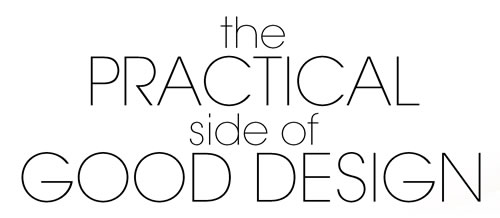Beethoven had his piano. Picasso his brushes. Similarly, today’s homebuyers tend to initially judge builders on their“ artistic” architecture—with blueprints their sheet music and their 3-D canvas of wood, glass and stone. But beyond the visual and social appeals, it is often the thoughtful, practical side of good design which helps buyers choose one home over others on the market.
Careful study is sometimes required to discover these practical design aspects—precisely because they just make sense and would only be noticed by their absence.
Let’s start with what happens when someone arrives home. Is there a coat closet or hooks nearby? Hopefully you’re not thinking those little 18”-wide entry closets that are expensive to trim out and offer little practical storage. Or, what about grocery traffic in from the garage? Is the kitchen nearby, or would you have to haul groceries half way across the home? Similarly, while most designs offer integrated or adjacent kitchen/breakfast areas, if your home has a formal dining room, how close is it to the kitchen?
When it comes to kitchens, you probably think of the ‘working triangle’—the relationship between where the oven, refrigerator and sink are located. That’s important. But so is storage! In response to our fast-paced lifestyle, we’re consuming more and more processed foods. (60% of working women, at 4:00 pm, don’t know what they’re serving for dinner that evening!) Hence, the tremendous popularity of bigger pantries. You gotta have ‘em! In the example floorplan, roll-out drawers in the wall pantry add a higher level of functionality and ease of organization.
Continuing in the kitchen, sink placement is a dead giveaway to looking at the practical side of design. (see below illustration) Comparing the two kitchen layouts shown in this illustration, the one with the corner sink and views outside in two directions seems a little more ‘inspired’—until you realize that you cannot open the dishwasher door and stand at the sink! Looks great on paper, but doesn’t work in the real world.
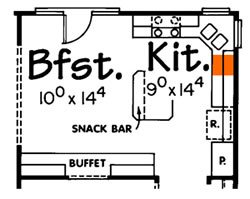
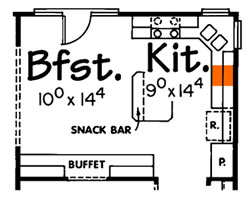
Typical dishwasher placement is right next to the sink, but with a corner sink, inserting a tall vertical cabinet next to the dishwasher (for cookie sheets, etc.) provides room to stand in front of the sink and have the dishwasher door open.
With our increasingly green-conscious society, kitchen recycling centers are getting lots of attention. Wouldn’t life be easier if space was provided to sort and hold paper, glass and aluminum products? We all want to do our part to make the world a better place.
Island sinks sometimes suffer from the same thoughtlessness. While it may solve the issue of where to place the sink, today’s trend towards uniform-height islands (no raised snack bar) means the flooring around that island sink is going to get wet—there’s no backsplash!
Near the kitchen (but not part of it) household planning/communication centers are one of today’s hottest amenities. Large enough for a computer, activities from downloading recipes to managing household expenses finds a home here. Importantly, with kitchens doubling as entertaining space, these planning centers need to be able to be closed off when guests arrive to keep clutter out of view.
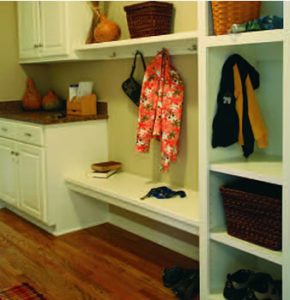
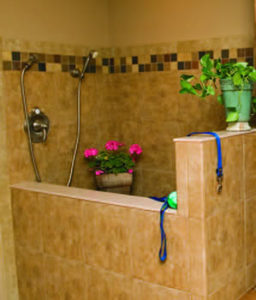
A pet shower is also great for gardening!
According to closet organization system professionals, well-designed closet storage systems can accommodate twice as many items as the standard closet rod and shelf approach. “Bigger closets” and “more storage” are often cited by buyers as prime criteria for buying a new home. Make the most of their space without defaulting to simply making the home bigger. The same holds true for laundry areas and garages. Organization and storage solutions may not be as glamorous as stone countertops, but will absolutely be something you value.
Hard surface flooring at all exterior doors lessens the need to deep clean carpeting. Not having to walk through one room to get to another is more convenient and can mean fewer interruptions. We don’t believe it’s a stretch to consider practical design an art form—because truly great art that we call “home” is lacking if it doesn’t enhance livability.

